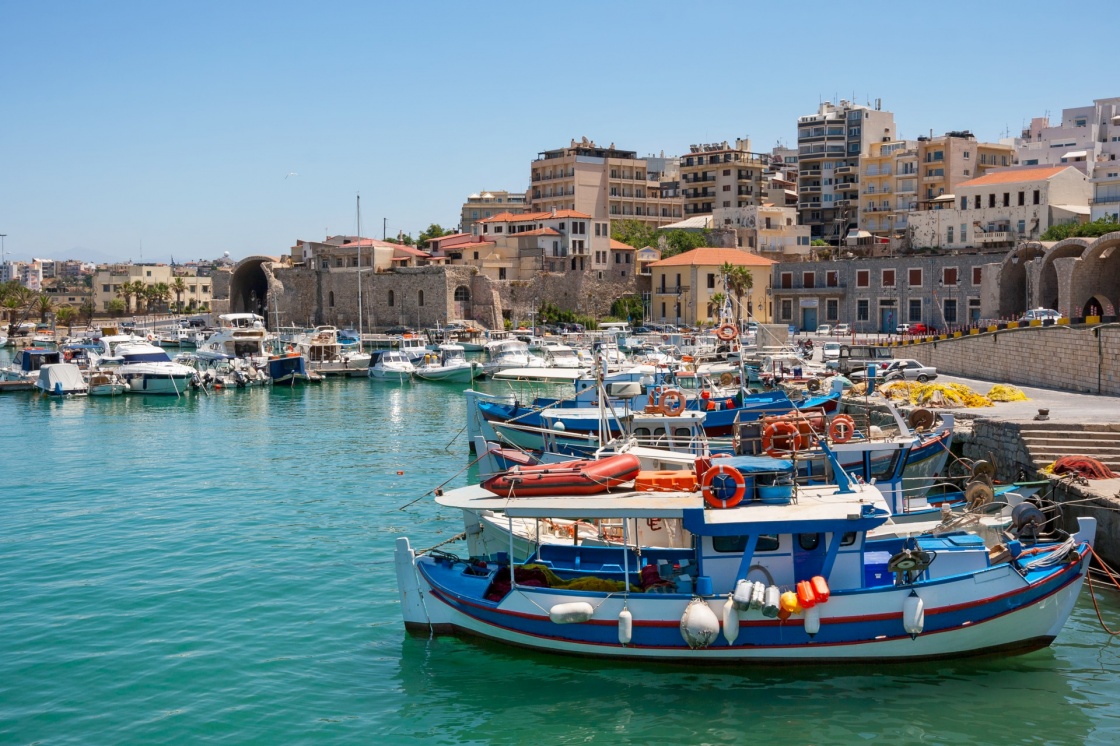Crete’s Dynamic Capital
Heraklion (Iraklio) may surprise you. At first glance, it’s a bustling modern city – traffic whirring around the massive Venetian walls, busy shops and cafes filled with locals. It doesn’t have the immediate quaintness of Chania or Rethymno, but give Heraklion some time and its rich character unfolds. I like to start my day here among the locals: sipping a Greek coffee at Kapetanake’s kafeneio near the market, watching grandmothers selecting fresh tomatoes and fishermen hawking itsy-bitsy sardines. Heraklion is the largest city on Crete, the island’s administrative heart, and you feel that energy. But it’s also a city steeped in history. Encircling the old quarter are formidable Venetian defense walls – among the best-preserved in the Mediterranean. These walls once withstood one of the longest sieges in history: the Siege of Candia, when the Ottomans besieged the city (then called Candia) for 21 grueling years from 1648 to 1669.
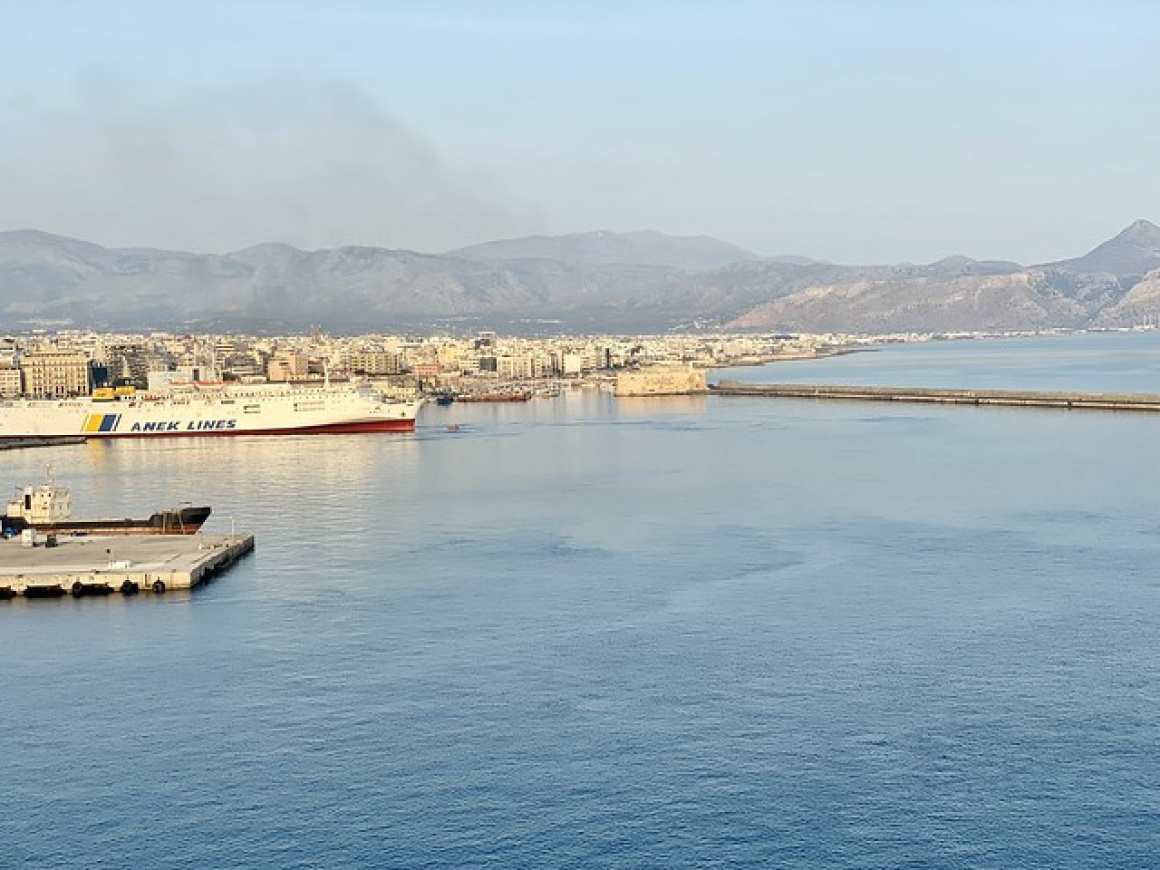
 'Heraklion Harbor Breakwater, Heraklion, Greece' - Attribution: w_lemay
'Heraklion Harbor Breakwater, Heraklion, Greece' - Attribution: w_lemayWalking along the ramparts at Martinengo Bastion, I often stop at the simple grave of Nikos Kazantzakis (Crete’s famed author of Zorba the Greek), whose epitaph reads: “I hope for nothing, I fear nothing, I am free.” From this perch atop the city walls, the view spans Heraklion’s mix of old and new – a sea of concrete buildings dotted with the occasional Venetian bell tower or Byzantine dome, and the harbour beyond.
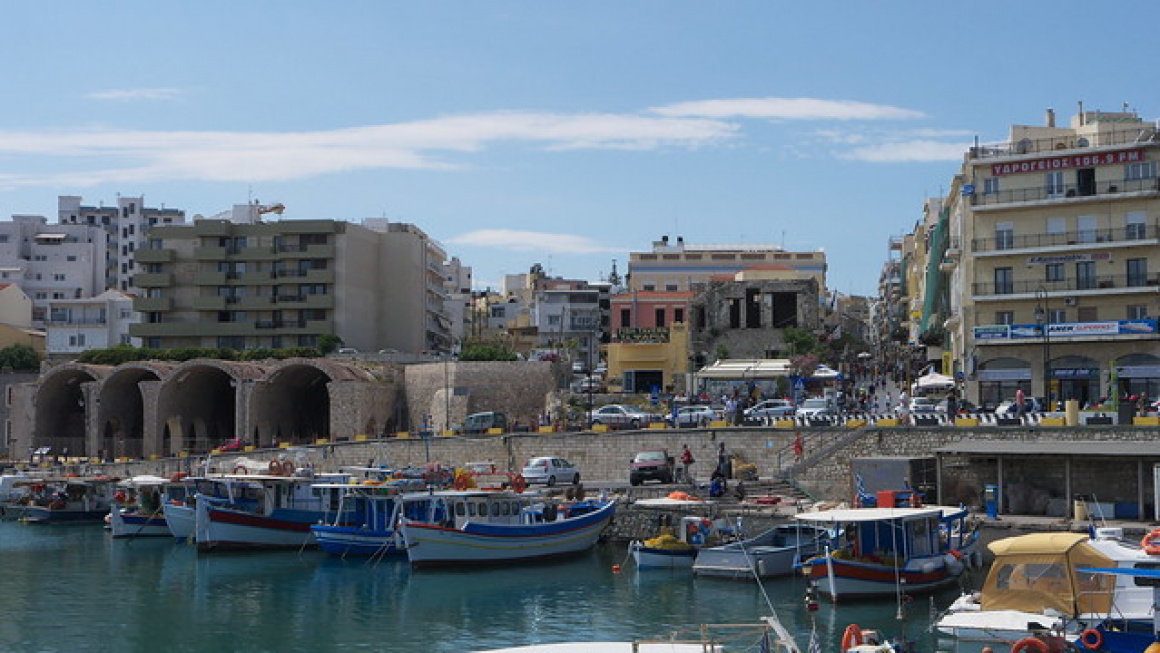
 'Heraklion' - Attribution: Tim Schofield
'Heraklion' - Attribution: Tim SchofieldVenetian Harbour and Koules
Climbing down from the walls, I head toward the sea. At the Old Harbour, a colossal stone fortress guards the entrance – the Koules Fortress, built by the Venetians in the 16th century. It was the last thing they held onto during that epic siege, finally surrendering to the Ottomans when Candia fell. As I step inside Koules (its thick walls provided shelter and storage for centuries), I run my fingers over the carved lion of St. Mark, the Venetian emblem still proudly adorning its gate. It’s humbling to stand within these chambers imagining the Venetian soldiers awaiting relief that never came. These days, the fort is beautifully restored; you can wander its dim casemates and then ascend to the roof, where cannons once pointed seaward. From up top, Heraklion’s maritime life unfolds below – colourful fishing boats and luxury yachts sharing the docks, and the giant blue ferries coming from mainland Greece. The curve of the old harbour is lined with seaside warehouses (the Venetian arsenals), their arched entrances now leading to art spaces and cafes. I often stroll out on the long harbour wall that extends from Koules, joining locals who come to fish or jog, and enjoy the salty breeze as waves crash gently against the rocks. It’s a refreshing escape right next to the urban hustle.
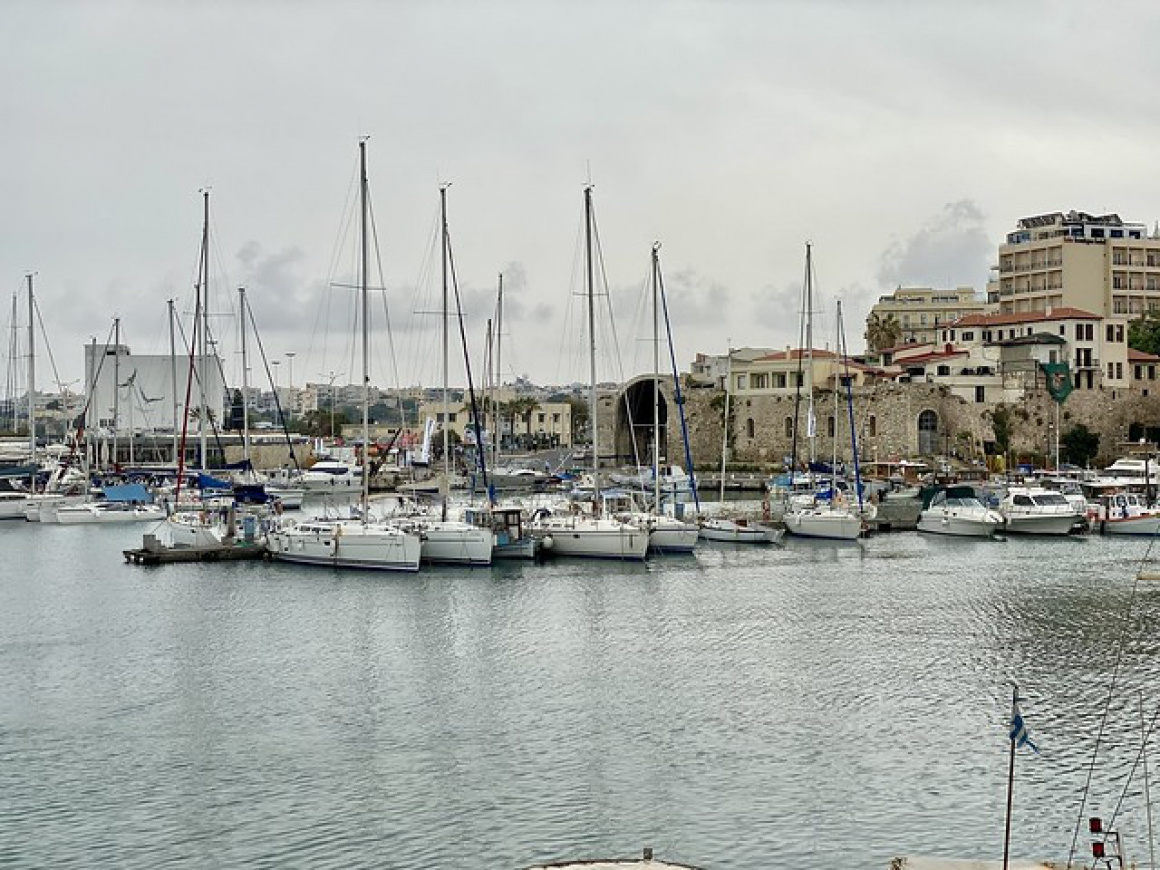
 'Old Venetian Port of Heraklion, Heraklion Harbor, Heraklion, Greece' - Attribution: w_lemay
'Old Venetian Port of Heraklion, Heraklion Harbor, Heraklion, Greece' - Attribution: w_lemayMyths and Museums
A visit to Heraklion is incomplete without delving into its Minoan past. Just a few kilometers south of the city lies Knossos Palace, the largest Bronze Age palace of the Minoan civilization. You can easily hop on a bus or drive there in 20 minutes. But even if you skip Knossos, the city brings the Minoan era to you through the Heraklion Archaeological Museum, one of the greatest museums in Greece. Whenever I wander its halls, I’m amazed: here lie the treasures of Knossos and other ancient sites – the vivid frescoes of blue-skinned dolphins, the enigmatic Phaistos Disc with its undeciphered symbols, delicate gold jewellery, and the famous bull-leaping fresco fragments. Seeing the Snake Goddess figurines, with their piercing gaze and outstretched serpents, always gives me chills (in a good way!). These artefacts speak of a sophisticated culture nearly 4,000 years old. The museum itself is modern and well-laid-out; it’s easy to spend a couple of hours, especially on a hot afternoon, immersing yourself in ancient Crete.
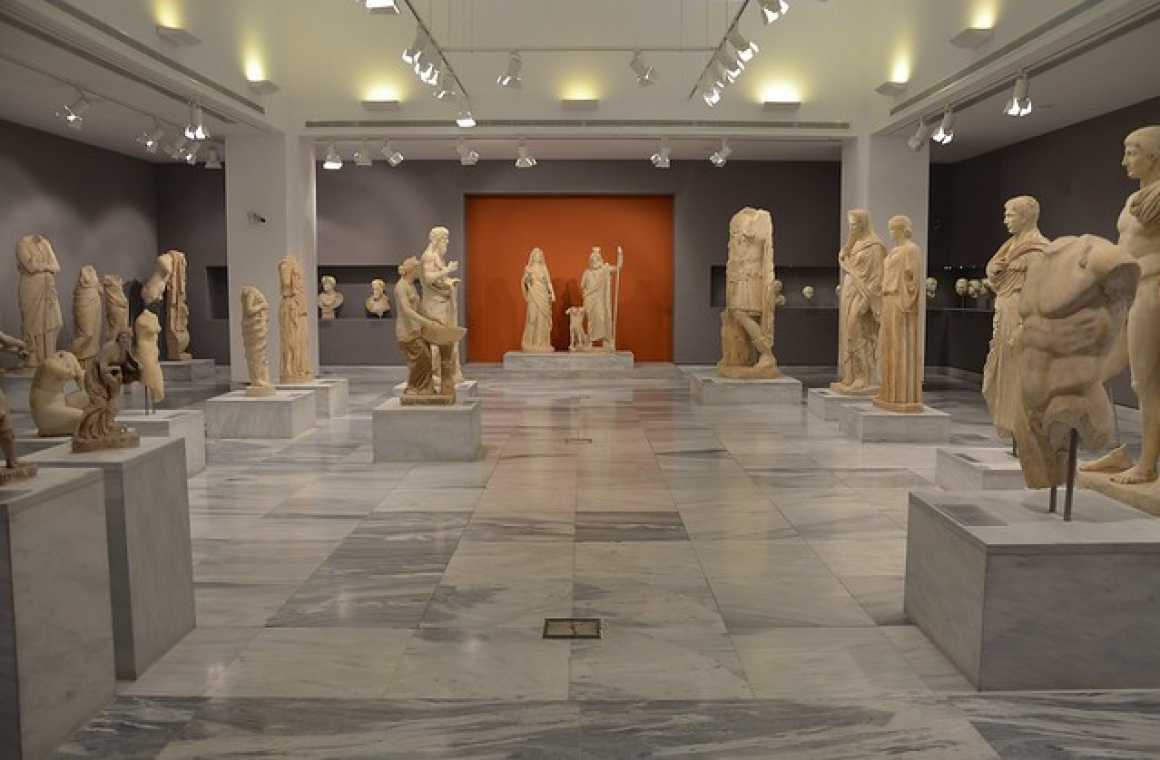
 'Heraklion Archaeological Museum' - Attribution: Following Hadrian
'Heraklion Archaeological Museum' - Attribution: Following HadrianYet Heraklion’s history doesn’t stop at Minoan times. In the center of the city, I love walking through Lion Square (Morosini Square), where a Venetian-era fountain of frolicking lions still gushes water. This square is a social hub – filled with chatter from surrounding cafes (it’s near-impossible to resist a bougatsa pastry at Kirkor nearby). From Lion Square, a short walk brings you to Agios Titos Church, originally 10th-century Byzantine, later a mosque under Ottoman rule (its graceful dome still hints at that past), and now an Orthodox church again. The blend of architecture tells the tale of Crete’s varied rulers. A couple blocks on is 25th of August Street, a pedestrian avenue lined with elegant neoclassical buildings – one of Heraklion’s prettiest streets, leading from the harbor up to Lion Square. Here you’ll find the Loggia, a 17th-century Venetian club for nobility, now housing the Town Hall. I often admire its arches and columns while enjoying creamy gelato from Dodoni next door.
City Vibes
Despite its antiquity, Heraklion is very much alive and buzzing. The central market street, 1866 Street, is a sensory overload – vendors yelling out daily deals on olives and cheeses, barrels of paximadi rusks, leather goods, and every spice under the sun. I bargain for some Cretan thyme honey and grab a sesame-coated koulouri (bagel) to nibble as I weave through the crowd. If you crave a quieter corner, duck into the Bembo Fountain square or the courtyard of St. Catherine’s Museum (which houses icon paintings by famous Cretan artists like Michael Damaskinos). By night, the city’s energy shifts to its numerous rakadika (raki bars) and restaurants. Areas like Korai Street fill with young people clinking glasses of raki and sharing plates of meze long into the night. Heraklion’s student population and professionals ensure a lively nightlife, from traditional music taverns to trendy cocktail bars. It’s a reminder that beyond the monuments, this is a city of present-day Crete, with its own modern culture and pulse.
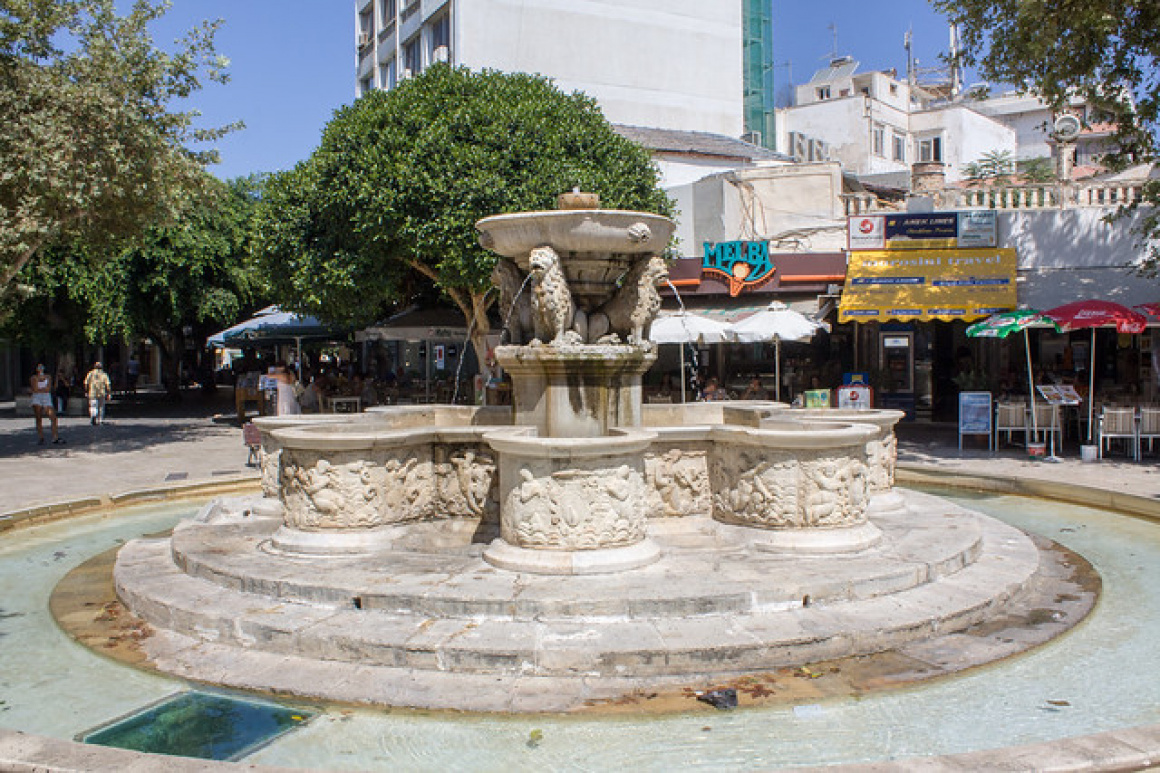
 'Heraklion' - Attribution: Shadowgate
'Heraklion' - Attribution: ShadowgatePractical Tips
Heraklion’s international airport and main ferry port make it the gateway for many visitors to Crete. If you’re arriving or departing by sea, allocate time to see Koules and the harbour, as they’re right there by the port. In navigating the city, most key sights are within the old centre, which is walkable, though do expect some traffic and noise on the periphery. The summer sun can be intense, so wear a hat and carry water, especially if you plan to explore the open-air ruins of Knossos or walk the exposed city walls. Midday, the shaded cafes around Lion Square or along Dedalou Street (the shopping avenue) are perfect for a cool drink. Heraklion has plenty of taxis and an inexpensive local bus system (for instance, the blue bus to Knossos runs frequently from the station by the old harbour). If you’re driving, parking lots can be found by the port or along the city walls, since street parking is a challenge. The city can feel hectic, but that’s part of its charm – embrace the organised chaos and you’ll start to feel the heartbeat of urban Crete.
Where to Stay in Heraklion
GDM Megaron Hotel – Housed in a landmark 1920s building overlooking the harbour, the Megaron is Heraklion’s classic luxury choice. Rooms are spacious and refined, many with sea views (imagine waking up to see Koules Fortress from your window!). The service is impeccable – they really pamper you here. Don’t miss the rooftop pool and restaurant; an evening swim with the city lights below is pure magic. Its central location means the museum and fortress are a short walk away.
Lato Boutique Hotel – A solid mid-range option renowned for its hospitality and location. It sits just above the old harbour, so choose a sea-view room if you can. The interior is modern, with comfortable rooms and a great breakfast spread (local cheeses, yogurt, honey – fuel up like a true Cretan). I especially recommend Lato’s rooftop restaurant Herb’s Garden for dinner – savour creative Cretan cuisine while gazing at the floodlit Koules Fortress.
Olive Green Hotel – A newer boutique hotel embracing eco-friendly principles and sleek design. It’s in the heart of downtown, perfect for shoppers and foodies. The rooms have a minimalist, high-tech vibe (you control lights and AC via tablet) and clever decor nods to Cretan culture. I love that they prioritise sustainability without skimping on style. Their ground-floor restaurant, 626 All Day Lounge, is a hip spot frequented by locals too.
Heraklion’s accommodations range from historic elegance to chic modern, mirroring the city itself. By choosing one of these hotels, you’ll have a comfortable haven in the middle of Crete’s vibrant capital – and be perfectly positioned to explore everything from Minoan ruins to lively raki bars, one step at a time.
To find your dream hotels in City of Heraklion and around the world, we’ve created Travelmyth, the unique hotel search engine with the widest selection of category filters. Whether you’re looking for dog friendly hotels in Swansea or hotels with infinity pool in the uk, Travelmyth is the go-to place to search for hotels.



